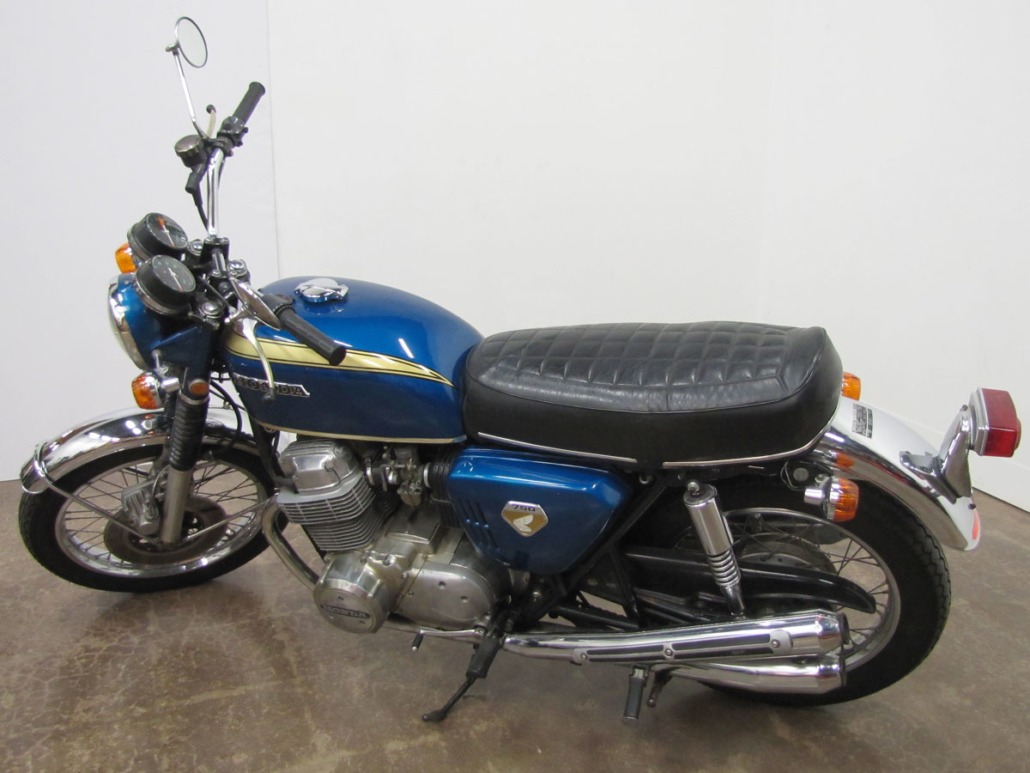 After years of reading motorcycle magazines, seeing the new models from Harley, the Italians, British makers and the Japanese “big four,” 1969 motorcycle magazines brought us all a jolt. We started to see photos of an all-new, four cylinder 750cc class machine from Honda. A quick glimpse showed a disk brake up front and four bold megaphones, Grand Prix style. Closer examination showed four carburetors and large, upright gauges ala Vincent Black Shadow. Additionally, the tires had a very rounded profile, not unlike Dunlop KR road race rubber; very unlike what most bikes were shod with at the time. Truly new and unique in design, did all this promise performance like Honda’s famed GP bikes of five years earlier?
After years of reading motorcycle magazines, seeing the new models from Harley, the Italians, British makers and the Japanese “big four,” 1969 motorcycle magazines brought us all a jolt. We started to see photos of an all-new, four cylinder 750cc class machine from Honda. A quick glimpse showed a disk brake up front and four bold megaphones, Grand Prix style. Closer examination showed four carburetors and large, upright gauges ala Vincent Black Shadow. Additionally, the tires had a very rounded profile, not unlike Dunlop KR road race rubber; very unlike what most bikes were shod with at the time. Truly new and unique in design, did all this promise performance like Honda’s famed GP bikes of five years earlier?
In our somewhat jaded current motorcycling times, this Honda CB750 launch would be no big deal. But during the mid-1960’s nearly all manufacturers had been at work developing bigger, faster bikes with the American market in mind. The 1969 landscape held impressive new machines; the British triples, the Commando Fastback, the recently released Kawasaki H1 Mach III plus the established Harley Sportster. Looking at the spec sheet and seeing the components, this 67 horsepower CB750 was truly revolutionary. And Honda, of course, provided great detail photos to the press showing the engine internals including the long one piece crankshaft with plain bearings and the chain driven overhead camshaft. All this eye candy was in those Cycle and Cycle World magazine stories that drove us to visit local Honda dealers.
At a competitive $1500, these bikes flew out of my local Honda dealer’s showroom and hit the streets. The candy blue, the color of one I test rode, was a bit odd, but the candy red with chrome fenders and those megaphone-shaped mufflers looked great…and sounded great. Massive performance compared to my Super Hawk. Soon, people riding other fast bikes like tuned Sportsters and Bonnevilles learned the CB750 was something to be reckoned with. Then Honda contracted with Dick Mann to run the Daytona 200 in March 1970, not long after the bike was launched. His bike was equipped with the full complement of Honda-offered “CR” race kit parts which would soon grace the cover of Cycle magazine. Mann won the 200, just barely, with a motor going sour. If Honda did not already have what they needed for a sales success, this big win iced the cake.
The SOHC CB750 was built for ten model years, then the black or silver DOHC CB750F came along in 1979. In these ten years, MV Agusta, Kawasaki, Suzuki and Yamaha all played catchup and ultimately improved on Honda’s great formula, now often referred to as the UJM or Universal Japanese Motorcycle.
In the 1970’s, things were happening fast with big changes coming at us. And this is just speaking of the heavy weight road bike segment. In that time-frame, look at the launch of the Japanese ATV with the Honda US90, the great Yamaha DT-1, and the amazing developments in motocross where long travel suspension hit in the mid-1970’s. And consider what we can own and ride now, like 220 horsepower sport bikes, even a dynamic electric bike from Harley-Davidson!
It’s been 50 years since this magic time. If you have a story about this era, please send us a comment.
This Honda CB750 is a 1970 model. Though a K0 like the launch bike, it was manufactured months later with a few differences including die-cast, instead of sandcast crankcases, cylinder and head. It’s on loan from the Jill and John Parham Collection and part of a very large display of important Japanese motorcycles beginning in the 1950’s. When you visit the National Motorcycle Museum, please check out this fine CB750 along with its contemporaries from many manufacturers.
Specifications:
- Engine: In-Line Four-Cylinder SOHC
- Type: Air-Cooled, Dry Sump
- Bore & Stroke: 61mm x 63mm
- Displacement: 736 cc
- Ignition: Battery & Coil
- Carburetor: Four 28mm Keihins
- Horsepower: 67HP / 8500RPM Redline
- Starting: Kick & Electric
- Primary: Dual Roller Chain
- Clutch: Wet, Multi-plate
- Transmission: 5-Speed
- Final Drive: Chain Driven
- Frame: Tubular Steel, Duplex
- Suspension: Hydraulic Fork / Swingarm, Dual Shocks
- Brakes: 296mm Disk Front / 179mm Drum Rear
- Wheelbase: 57.5 Inches
- Wheels/Tires: 3.25 x 19 / 4.00 x 18
- Weight: 495 Pounds
- Top Speed: 125 MPH
Leave a Reply
Want to join the discussion?Feel free to contribute!

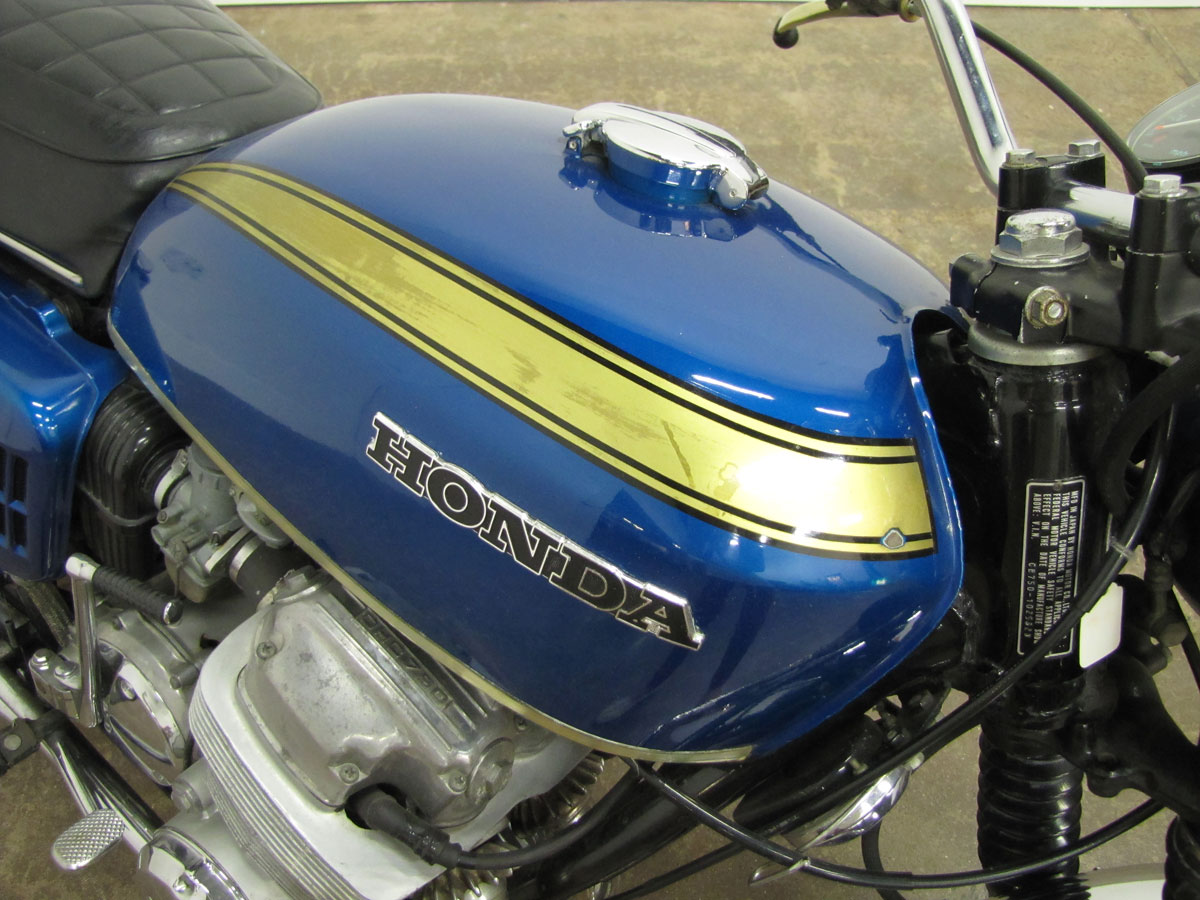
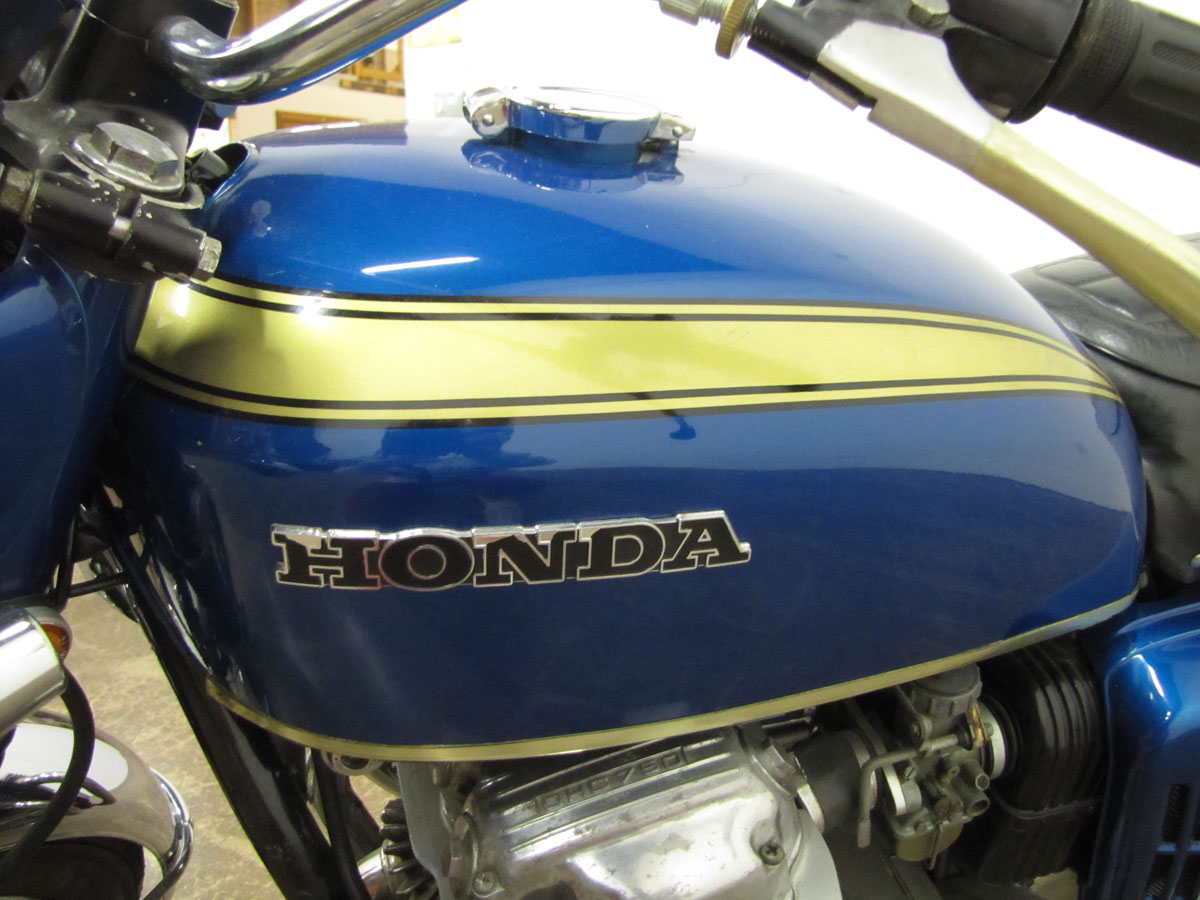
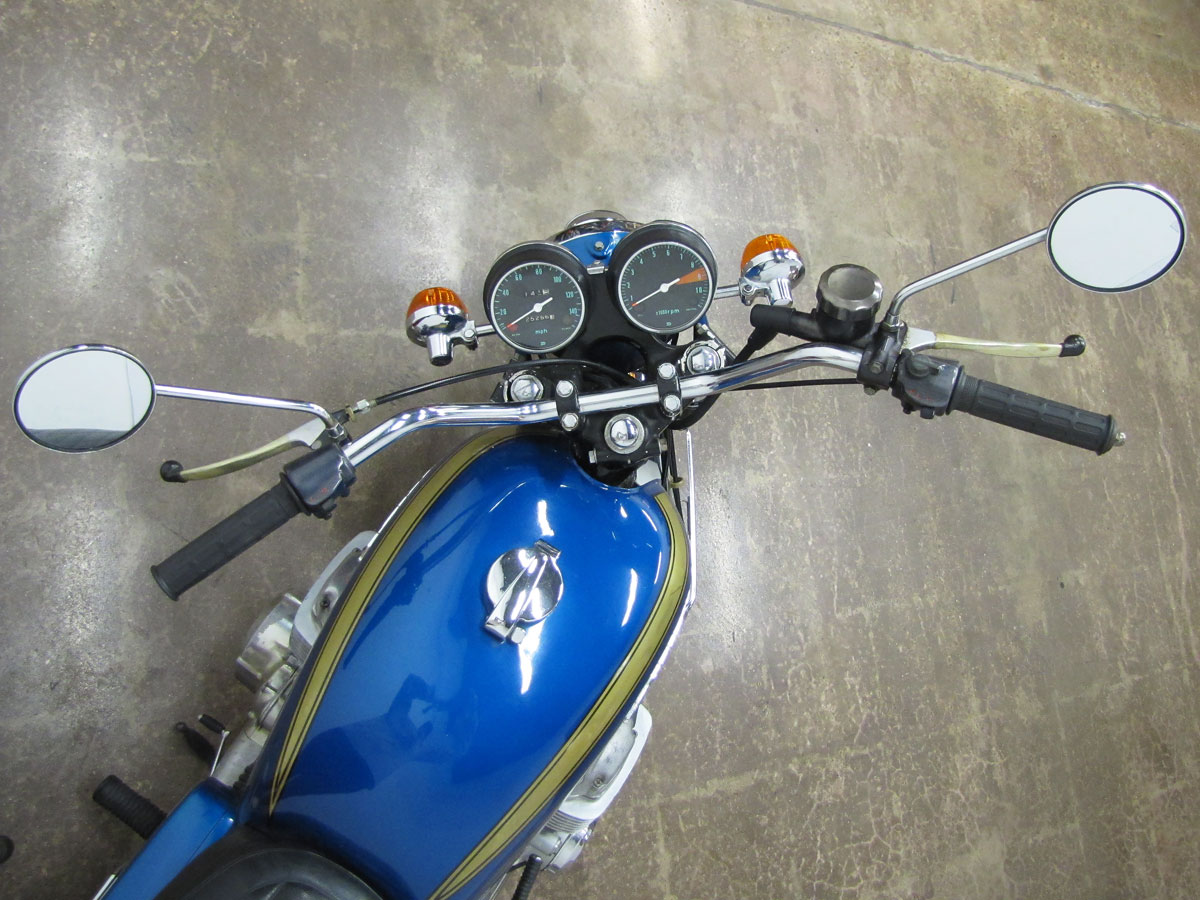
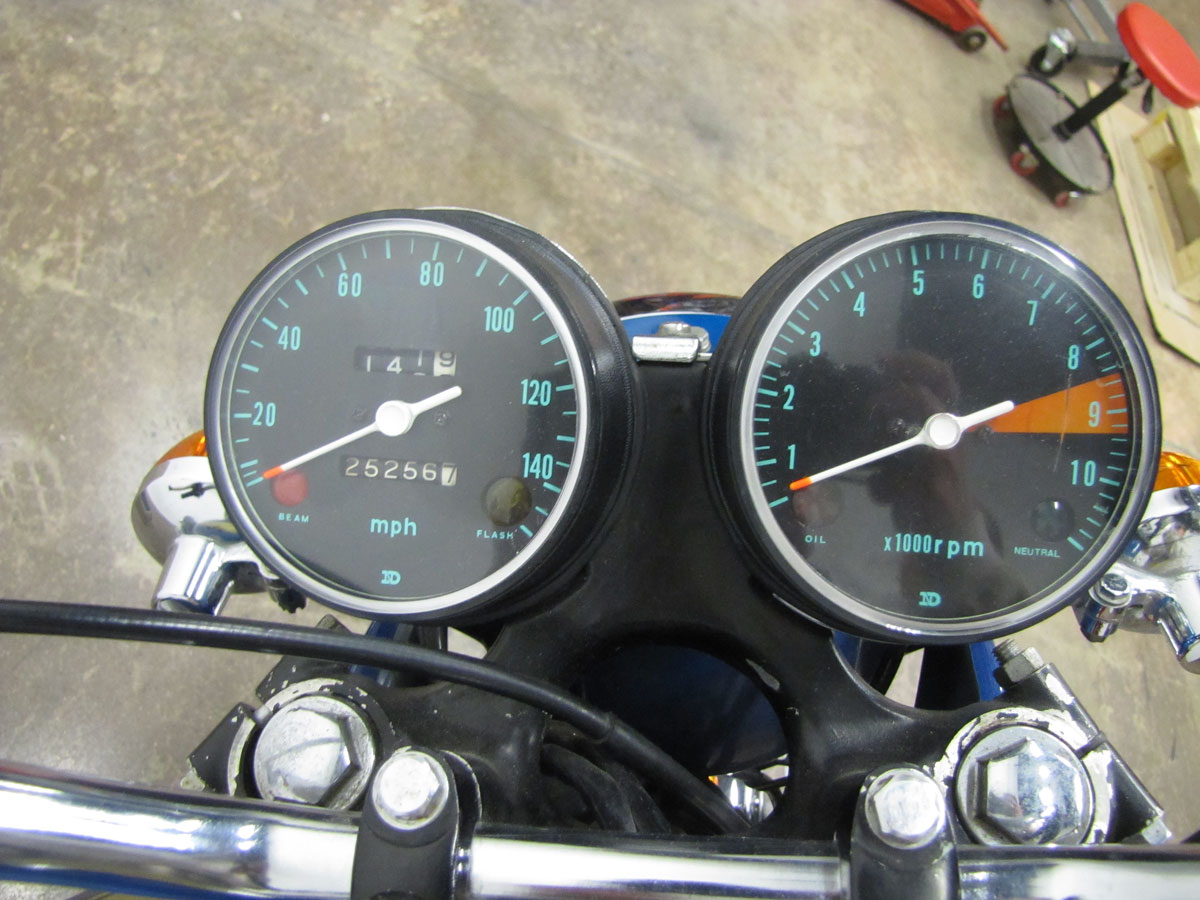
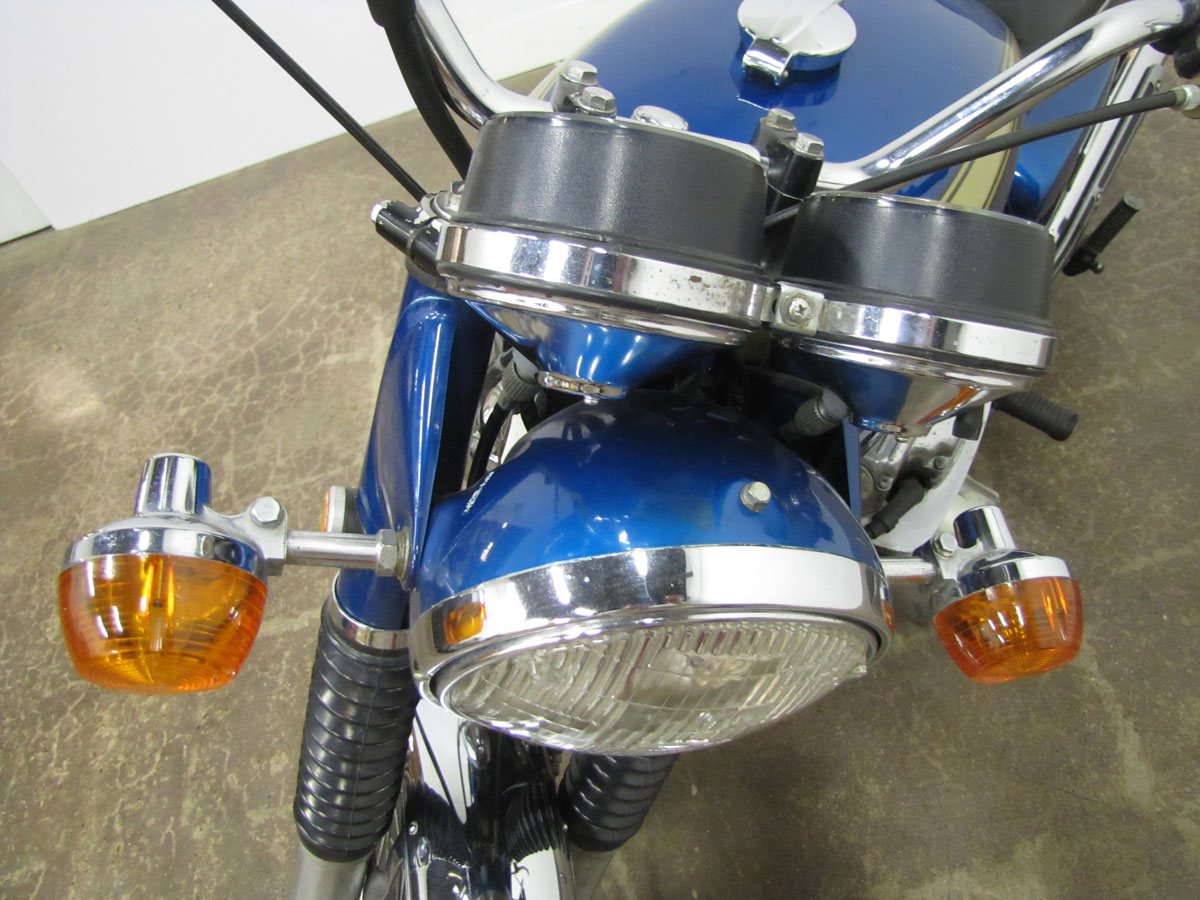
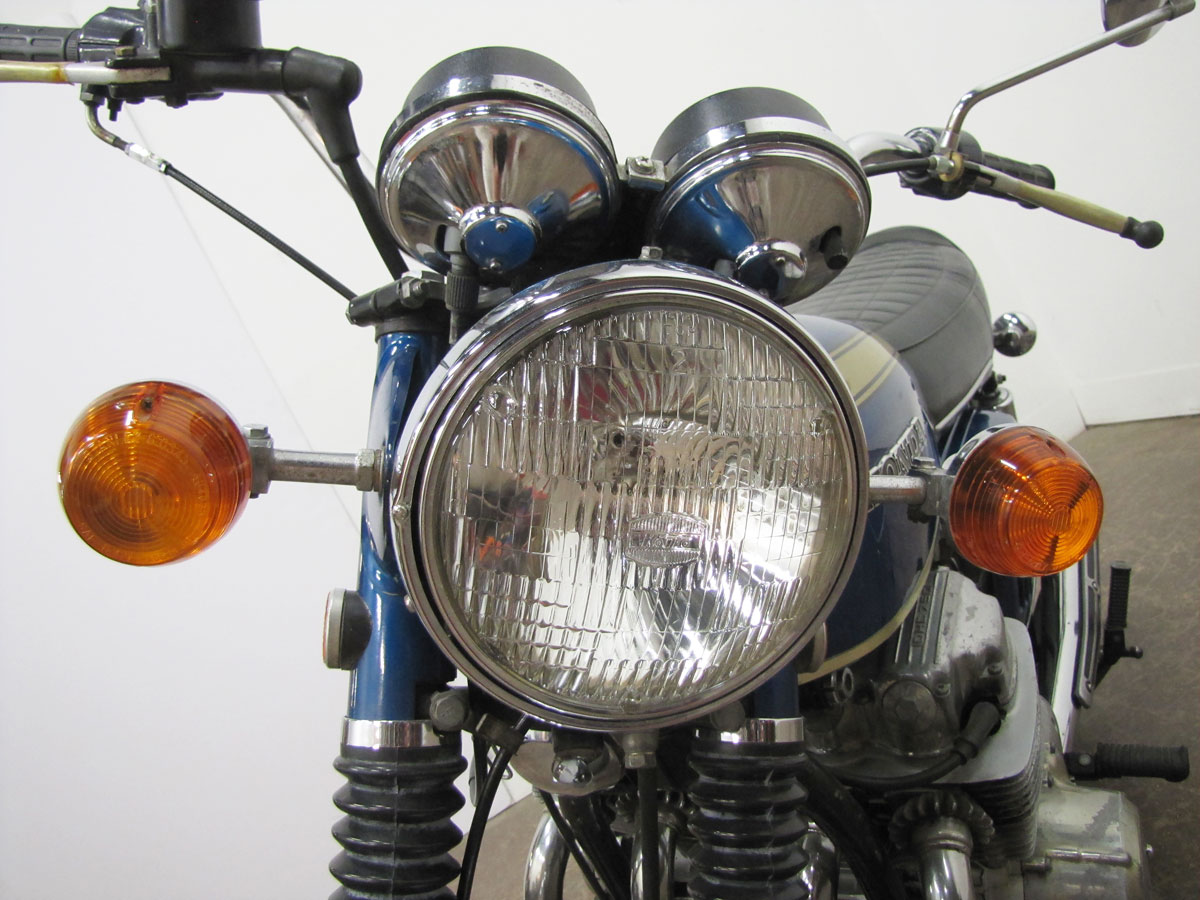
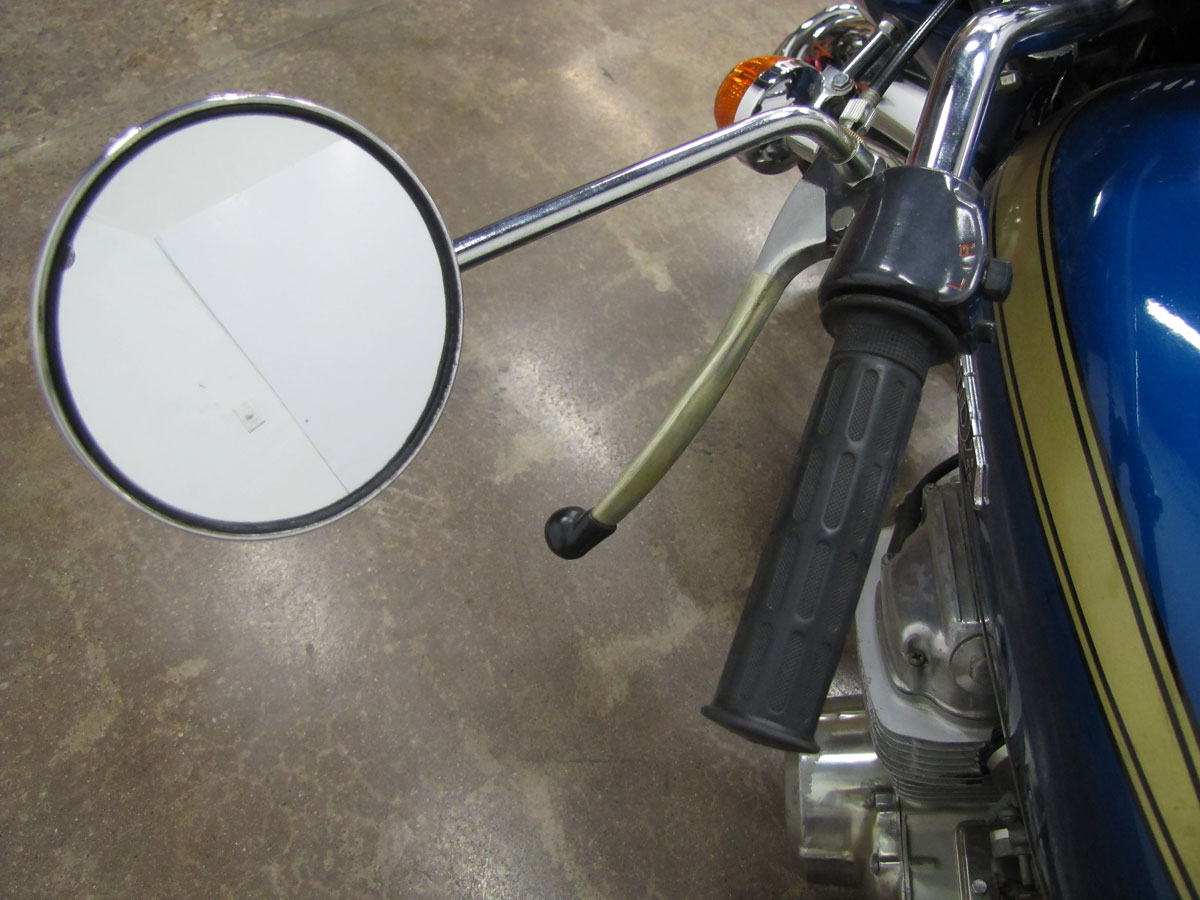
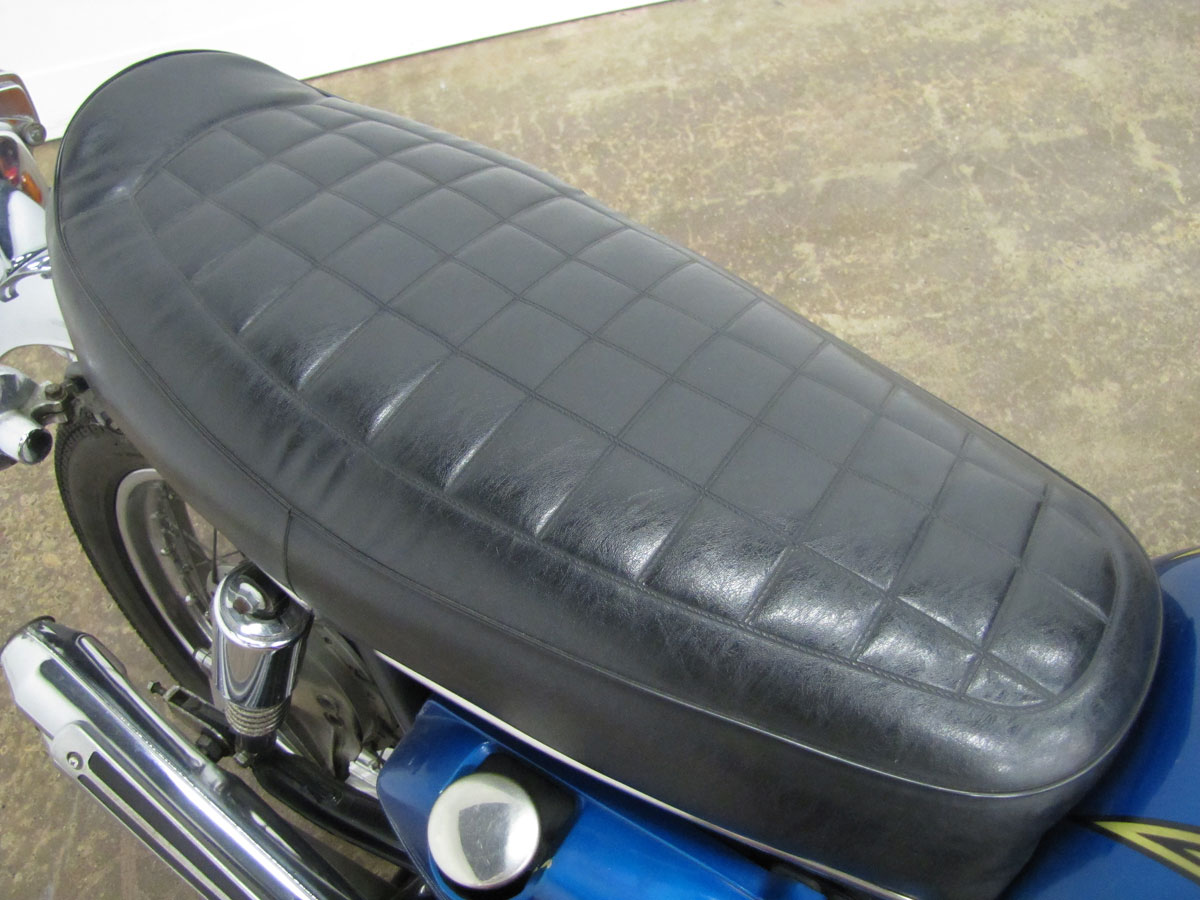
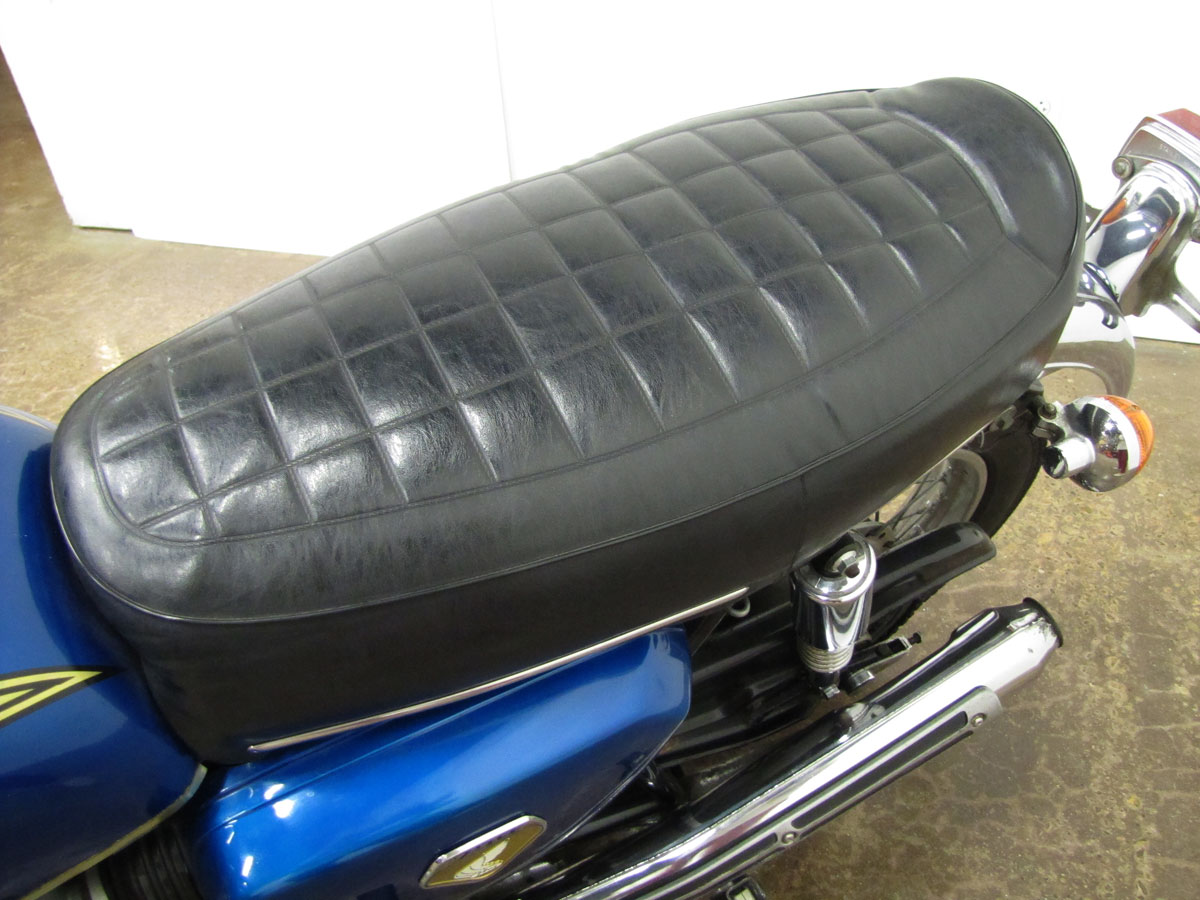
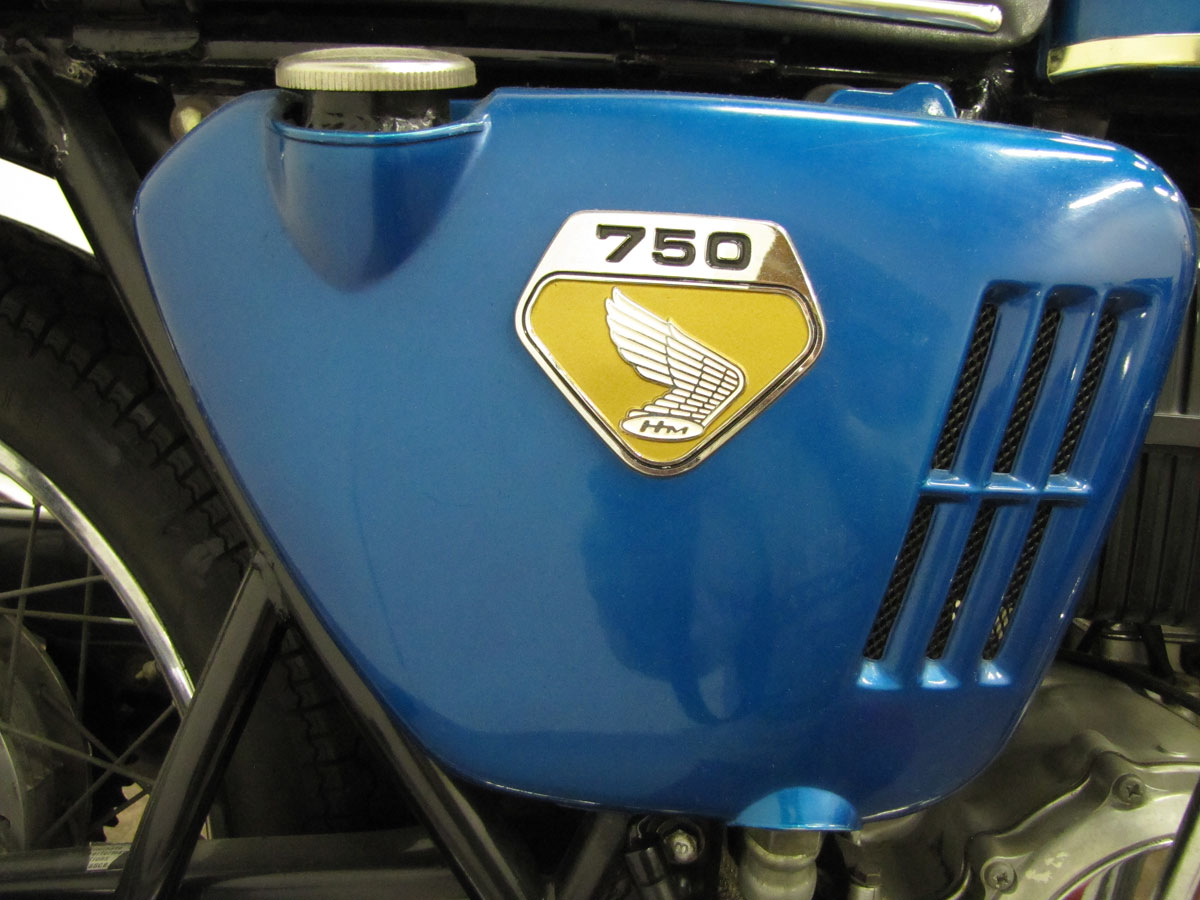
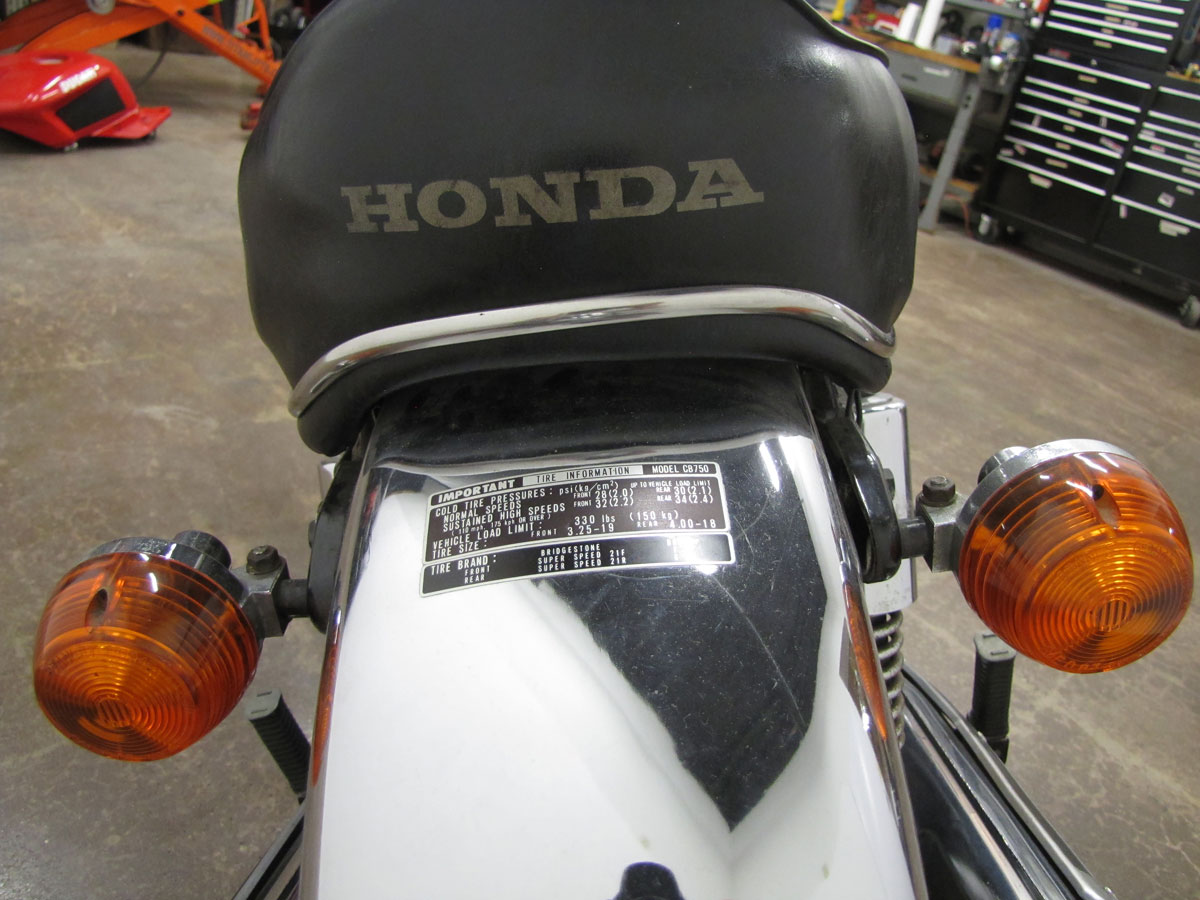
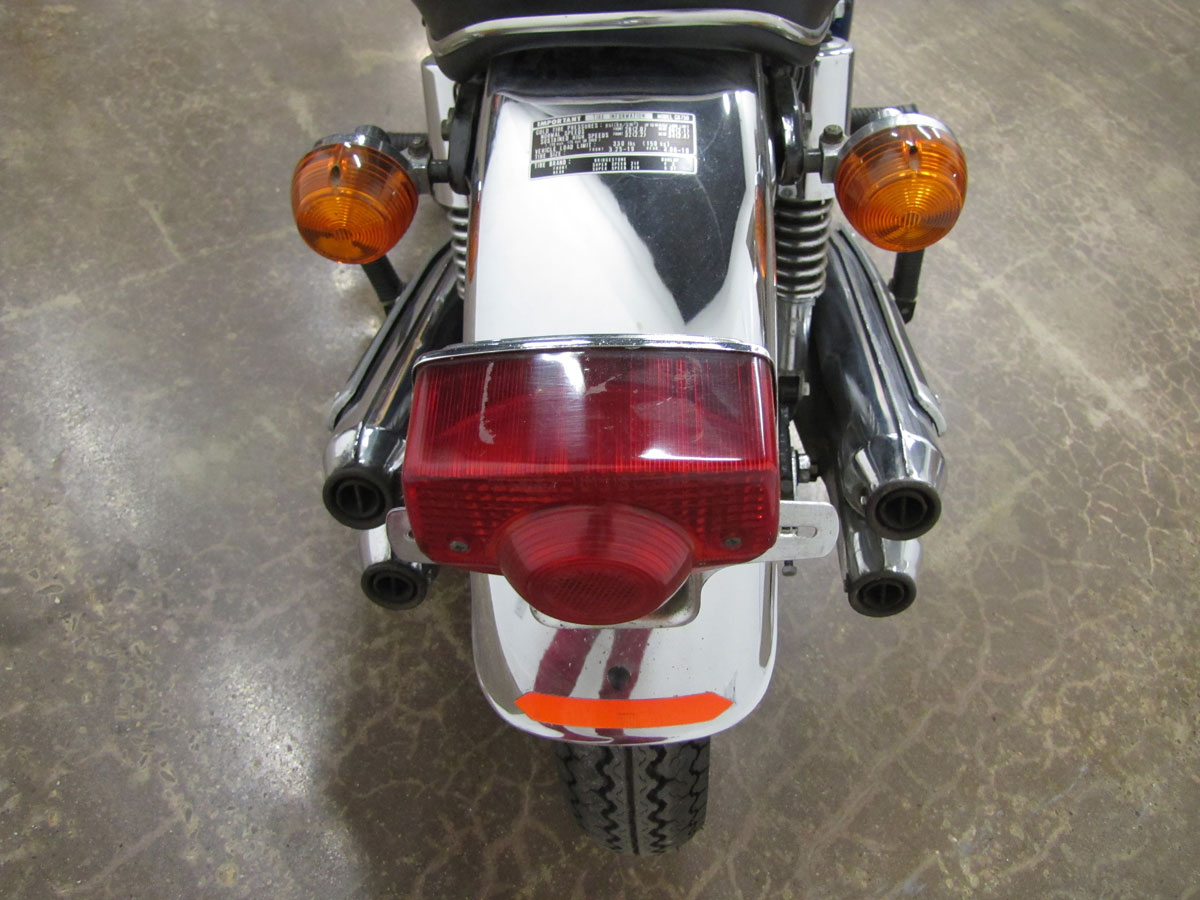
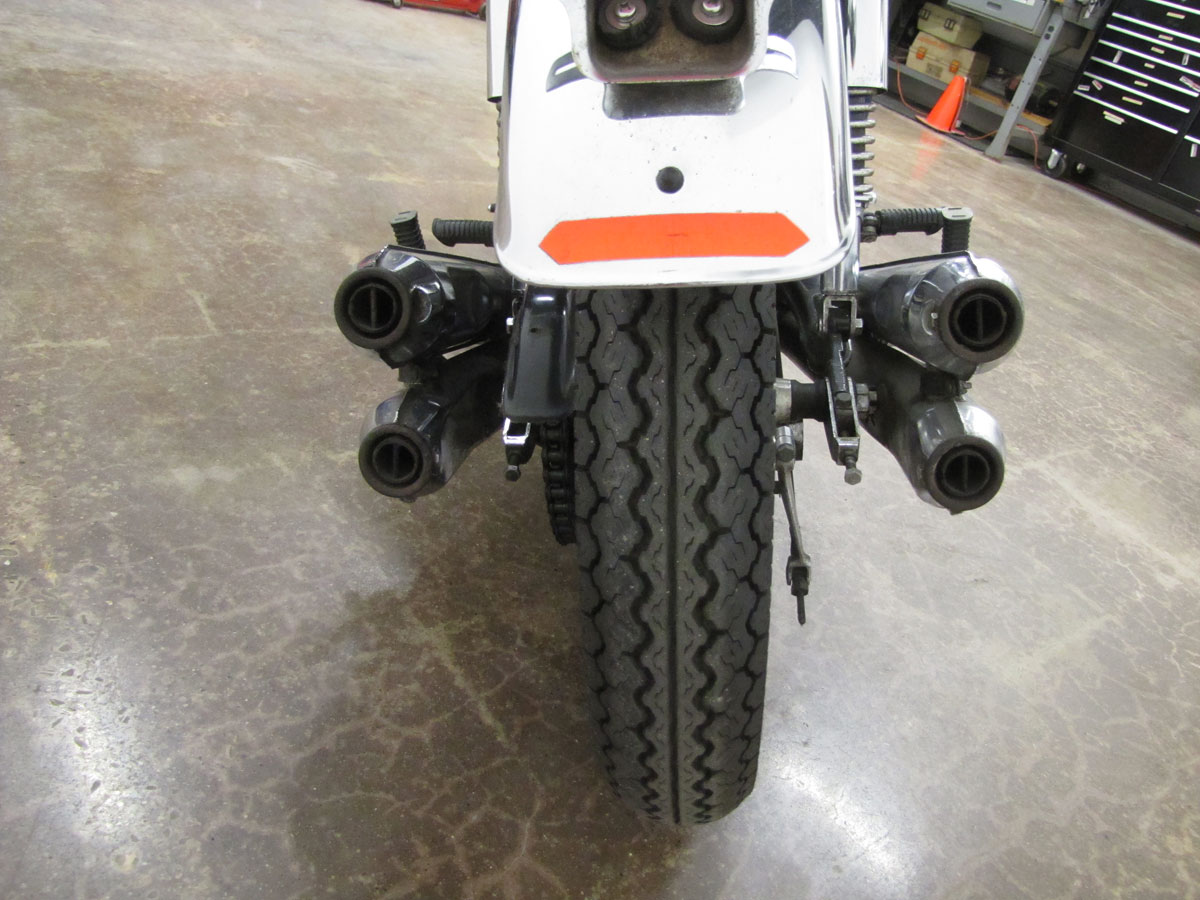
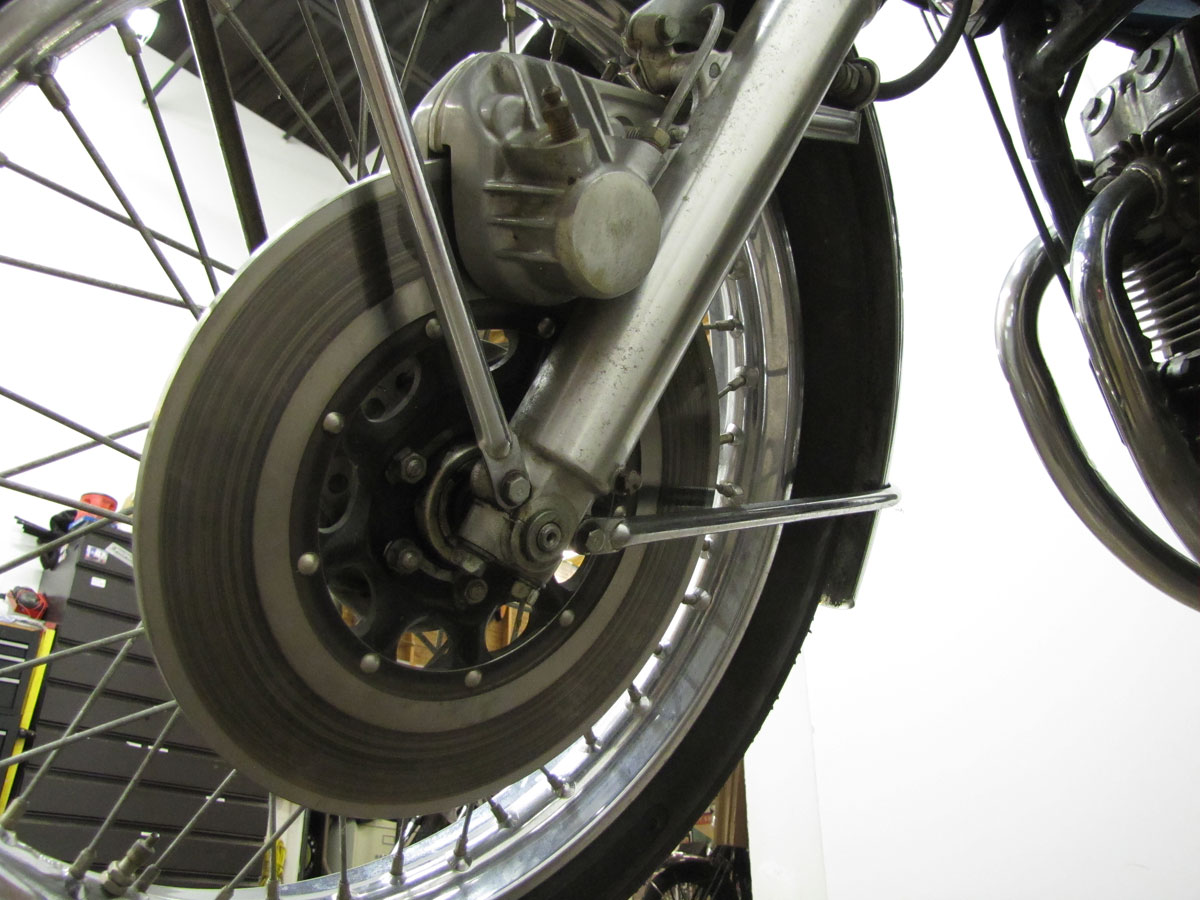
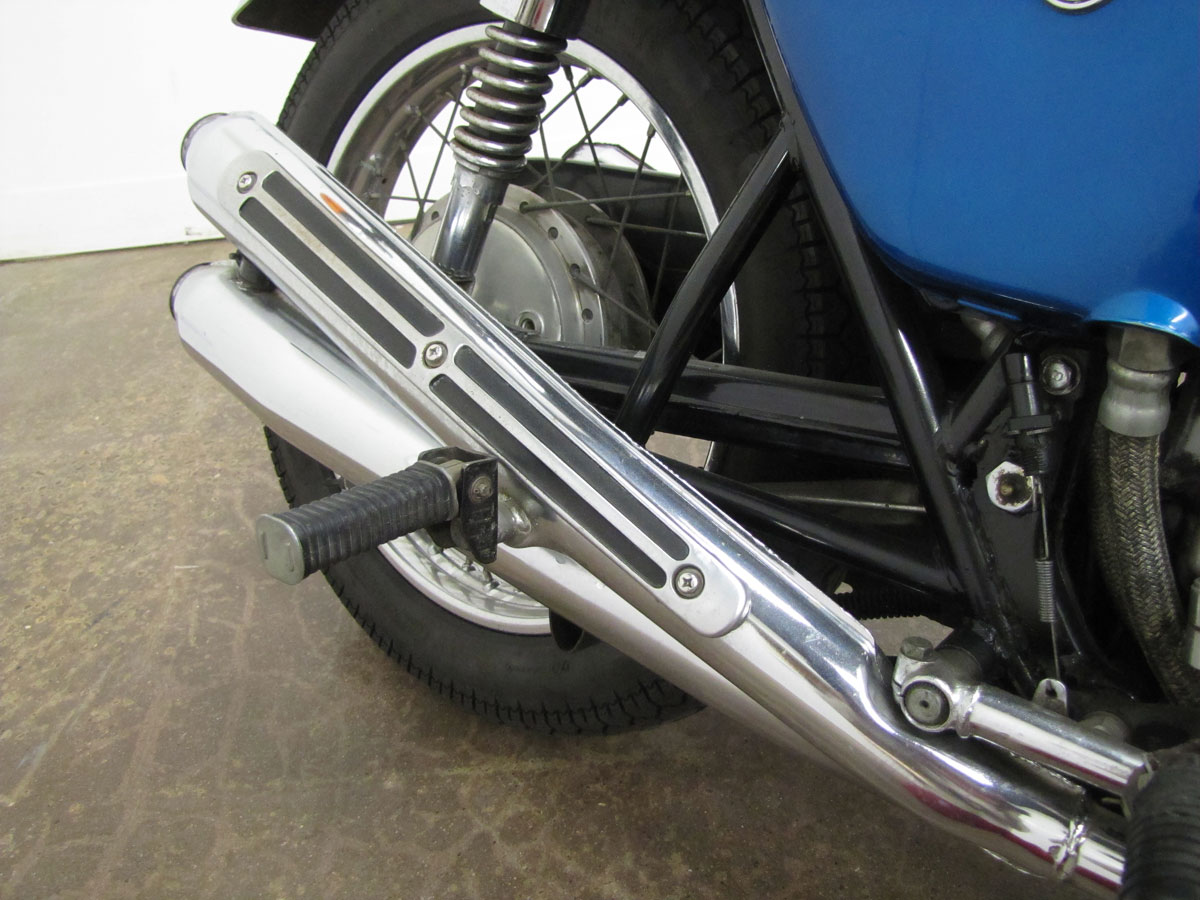
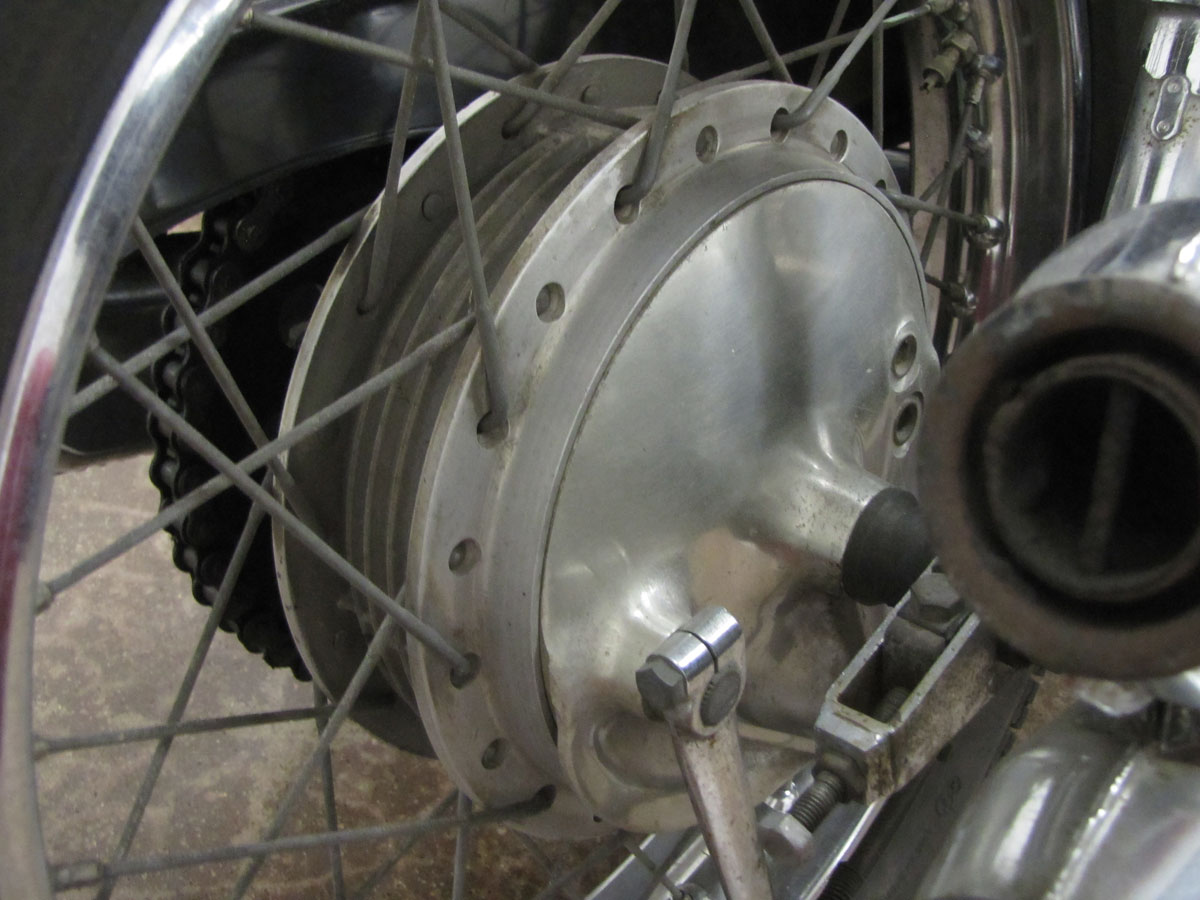
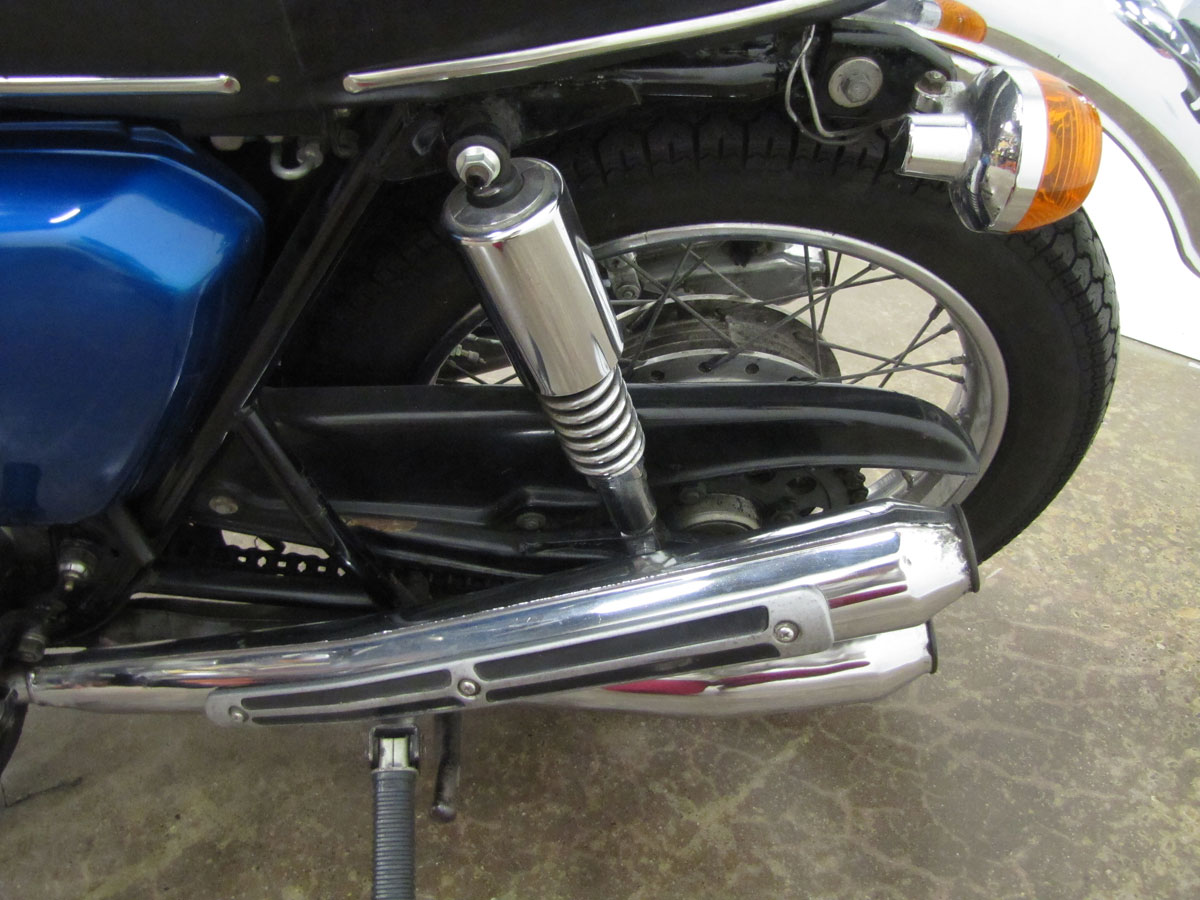
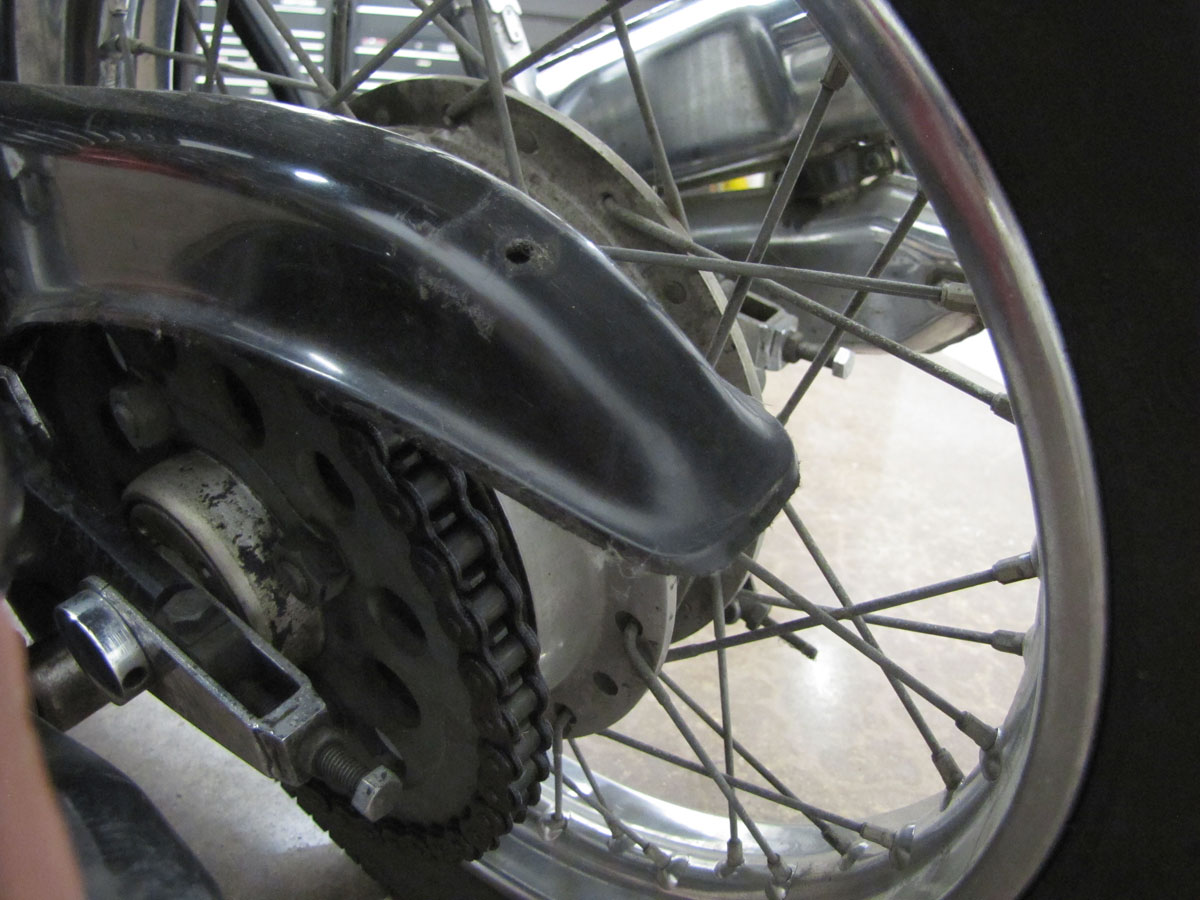
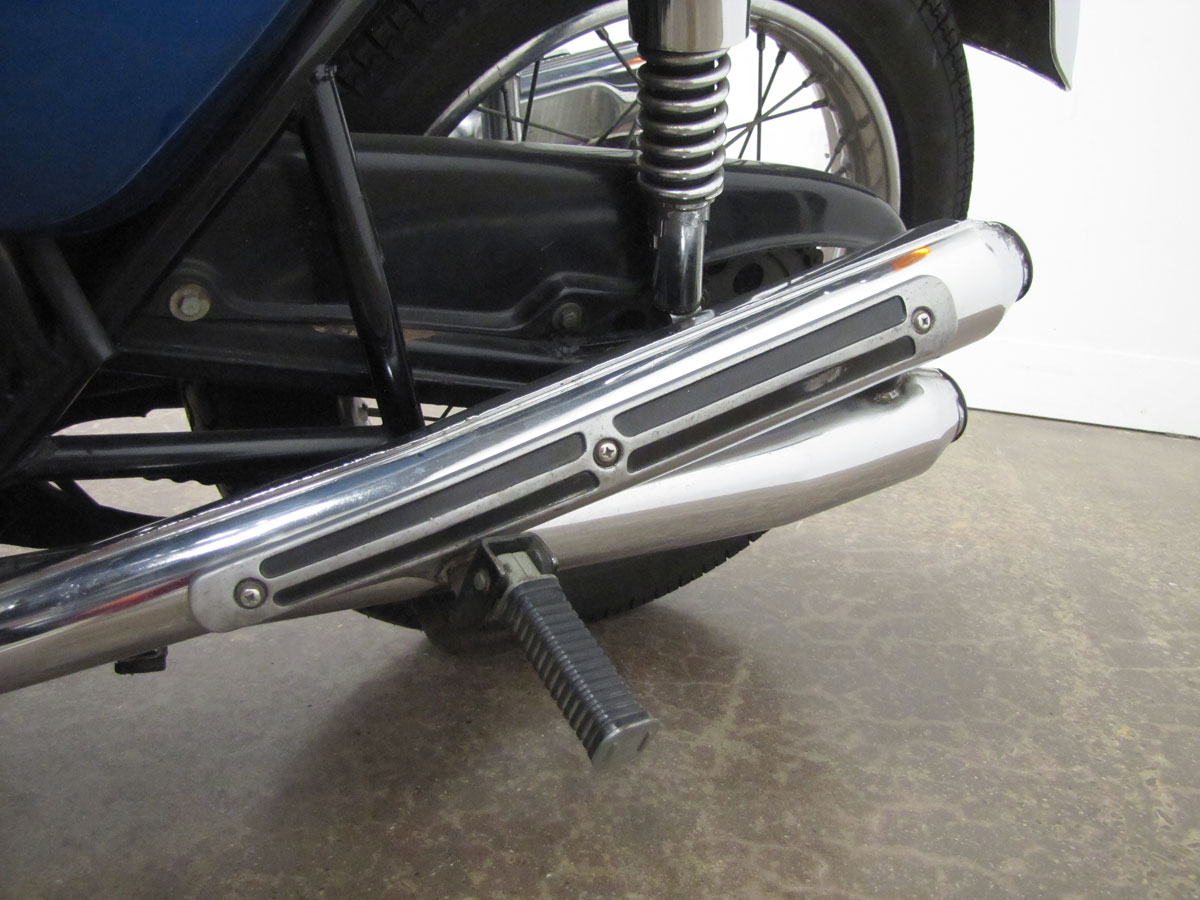
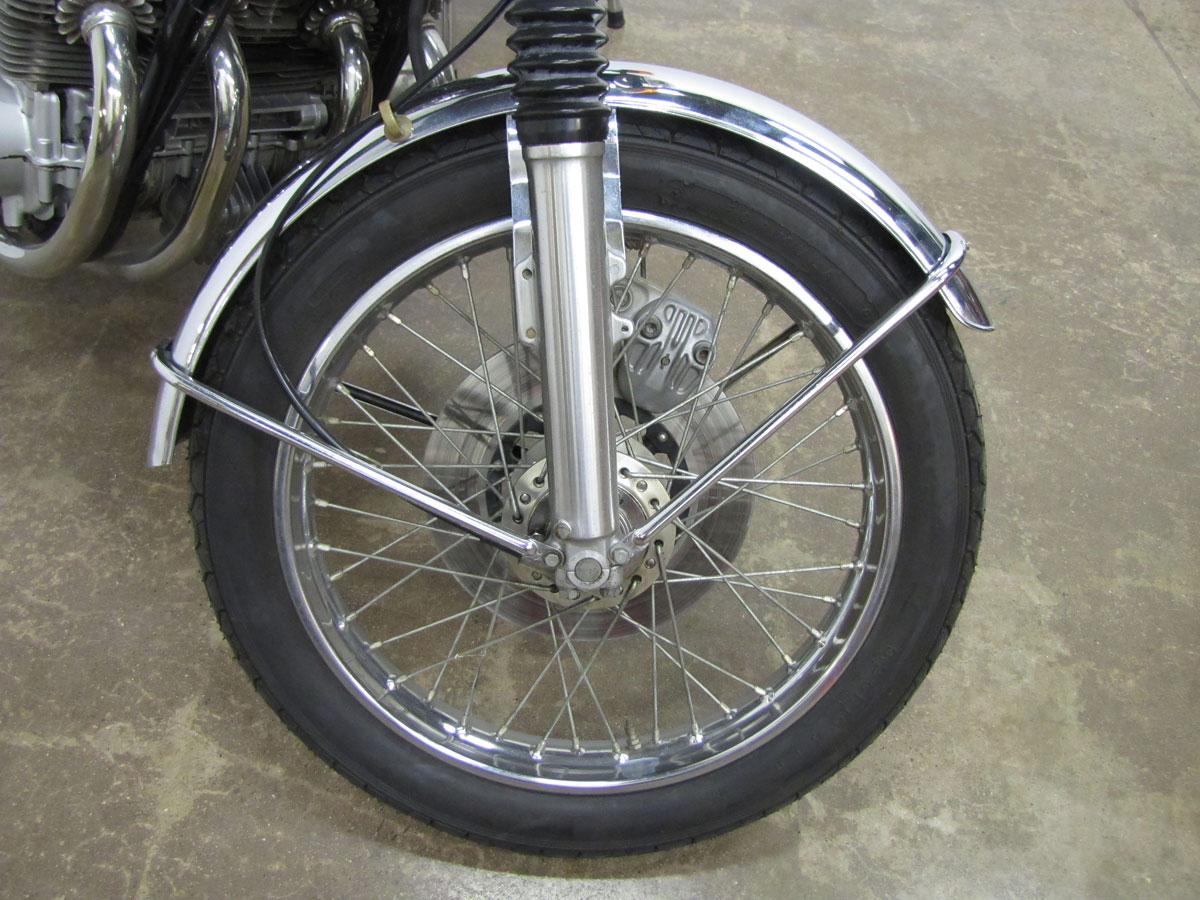
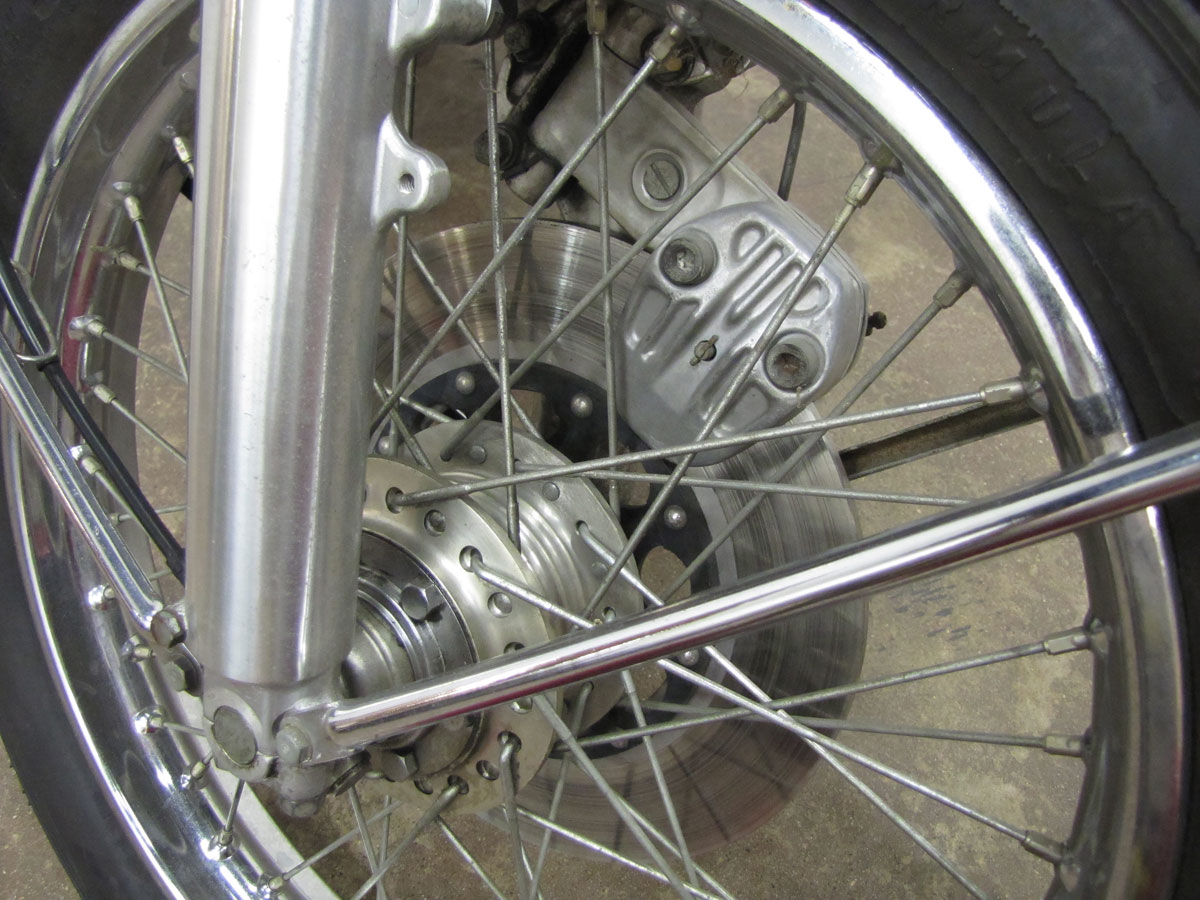
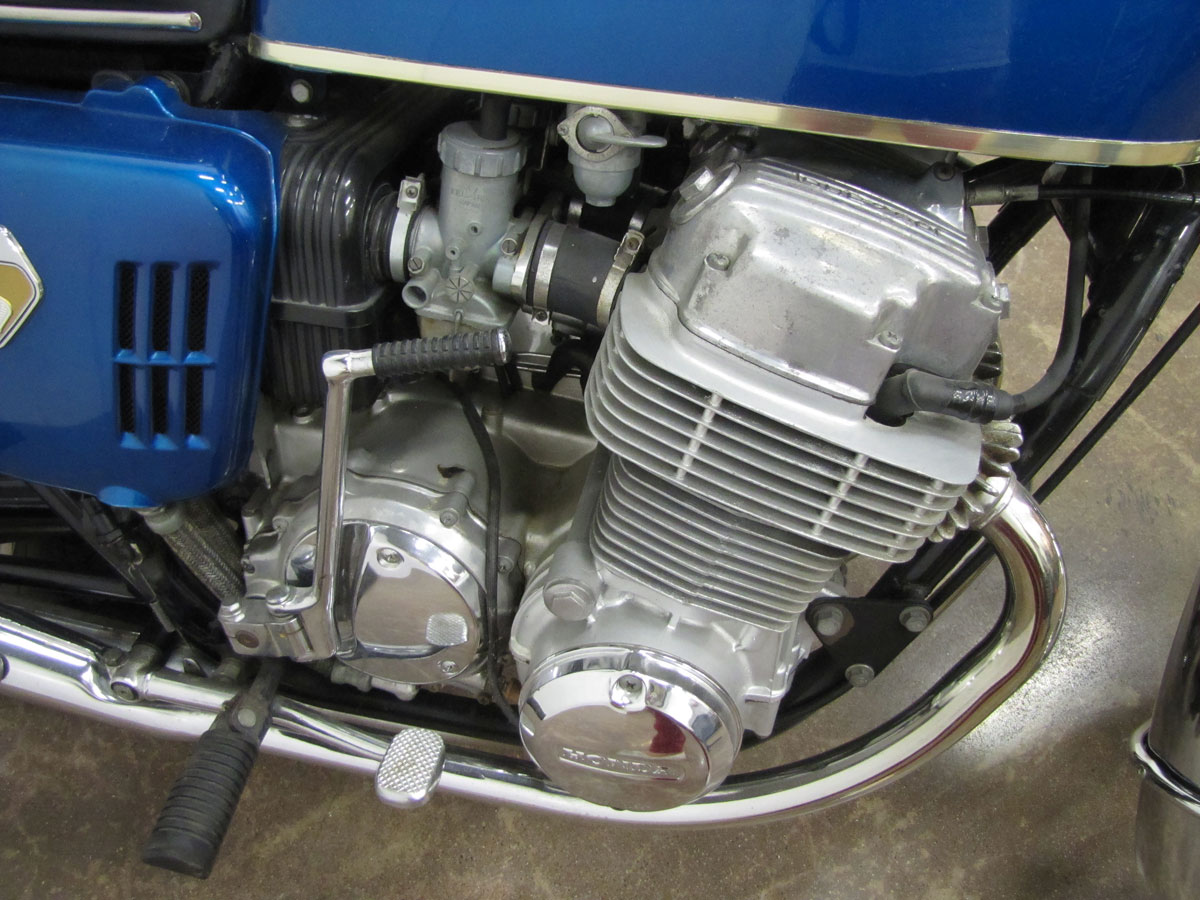
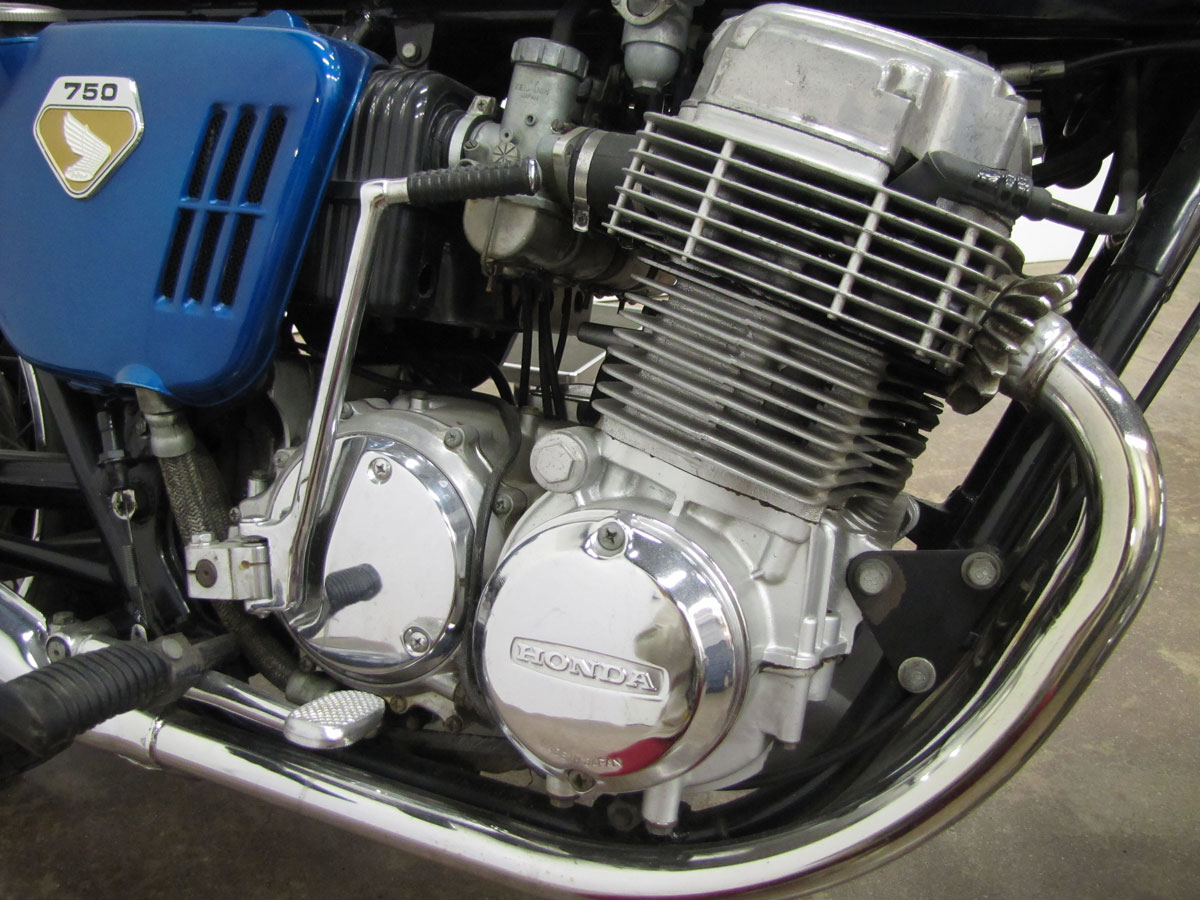
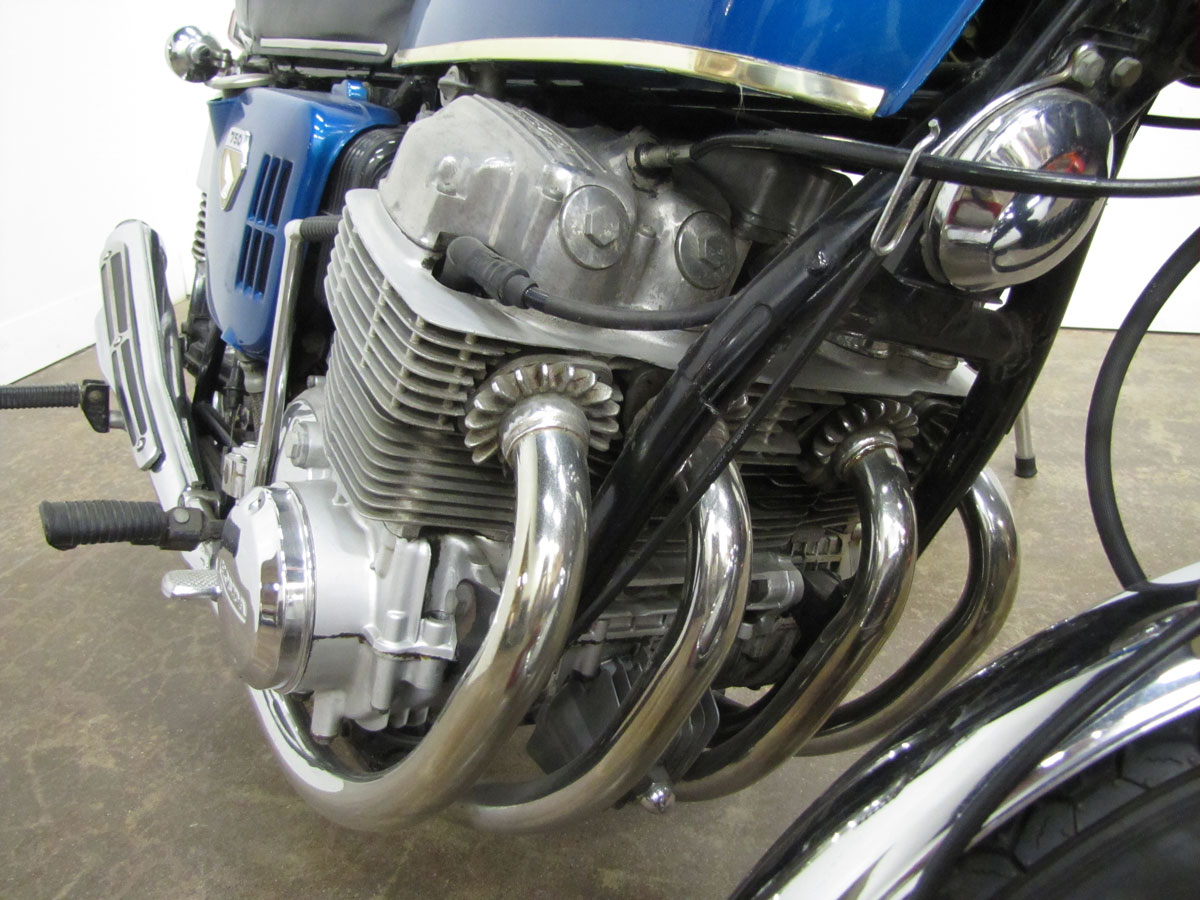
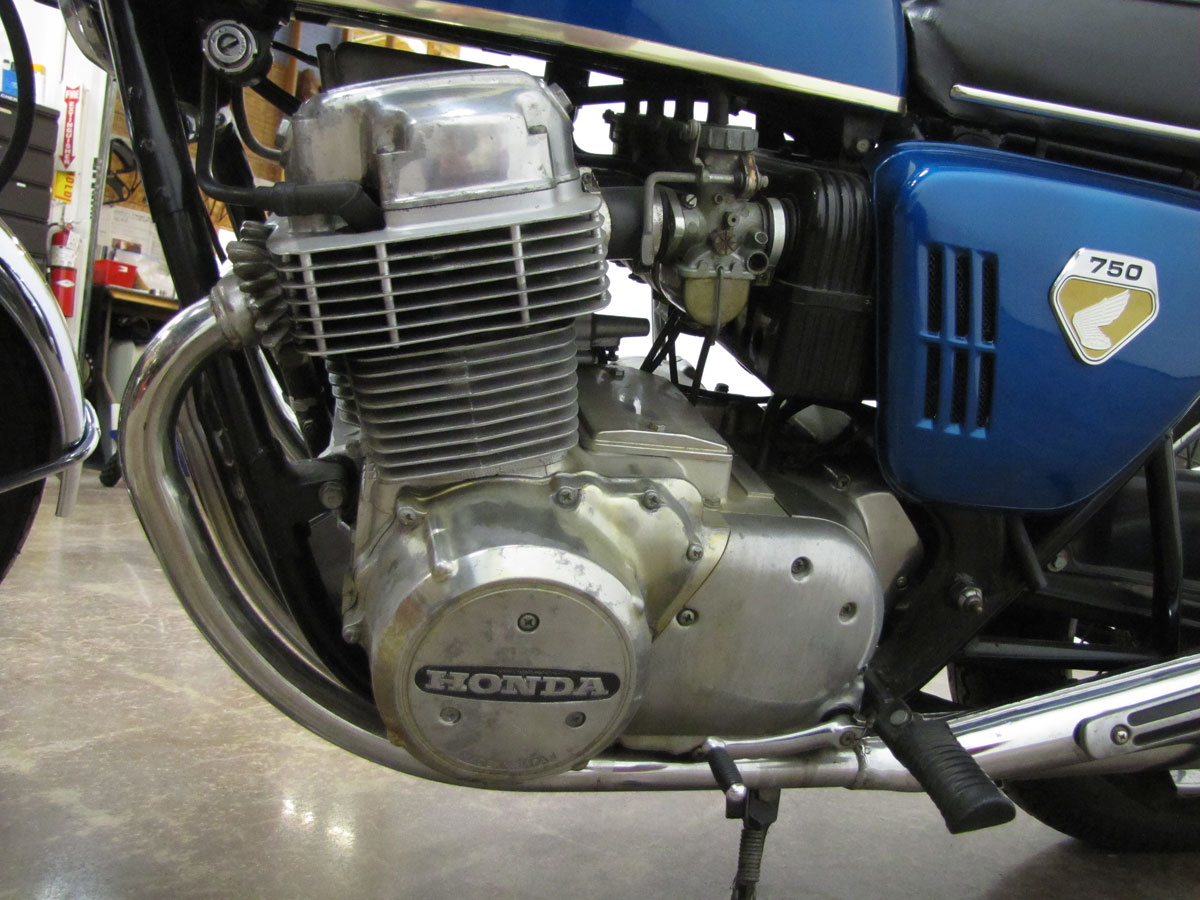


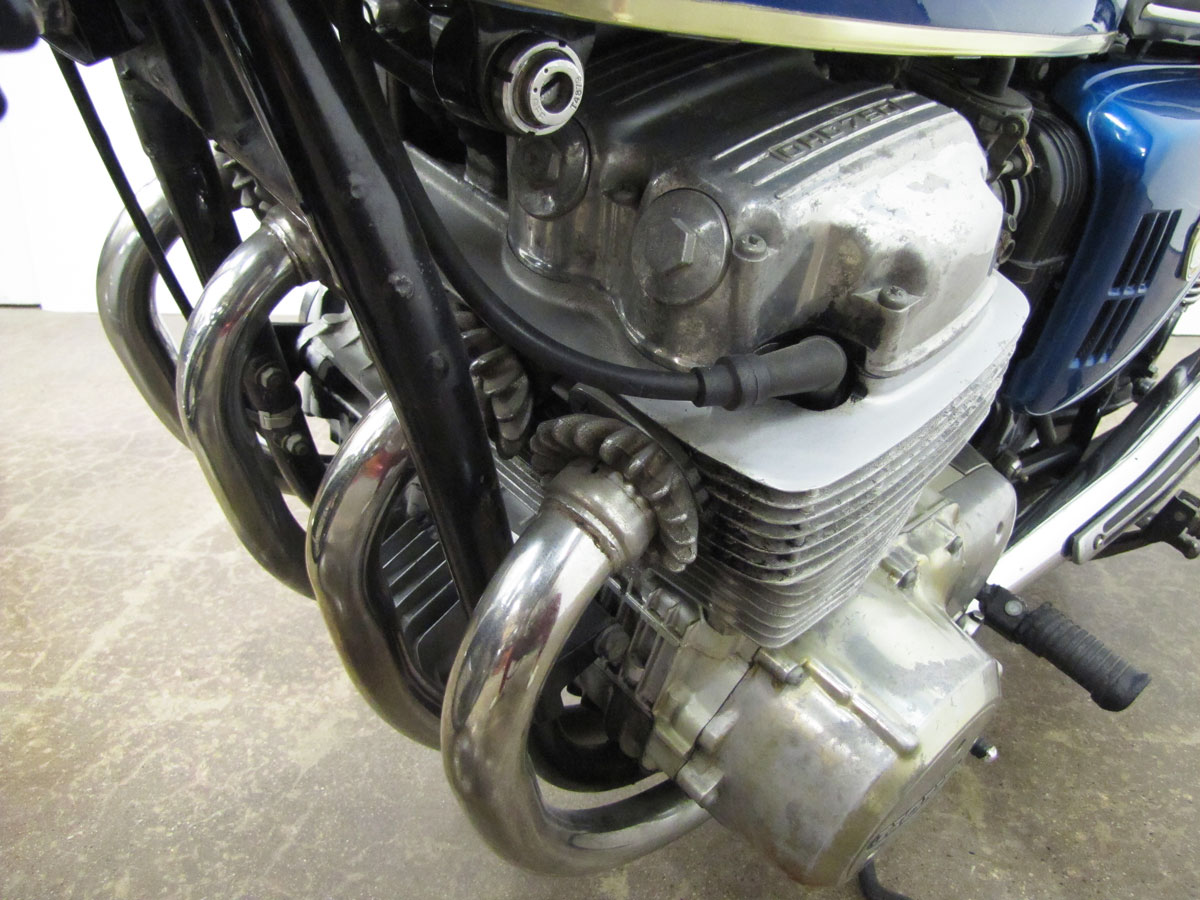


Started riding on a 1969 Honda CB750 K0 (third owner, bought in 1972). Later owned a CB900F. Both bikes were scary good.
Unless you lived through that time when the CB750 was introduced you really can’t appreciate what a seismic shift it was in the industry. I was a mechanic then working in the Honda dealership I eventually came to own and had the privilege of setting up servicing the very first one. So of course I had to ride it!
At the training school I went to in Atlanta for the bike they had an engine set up with the cam and rockets removed but attached to to the oil tank. When they spun it over on the starter oil shot 20’ in the air!
The purpose of the exercise was to demonstrate how powerful the top end lube was.
Fifty years? I remember growing up in a small west central Wisconsin rivertown. I was twelve and my pal had an older brother who rode. Billy and his “bros” Jerry, and Larry would be in the garage taking their front fenders off their Honda 50s. This was done so they could be like the riders in the latest movie “ Easy Rider”! A while later Jerry bought a new Honda 750…. I myself rode a 175 Kawasaki in the service years later. After I was out I rode a Honda 500 4 cylinder. Later I bought a 1974 sportster XLCH. Then a ‘48 Harley Panhead and a ‘78 Shovelhead. I still ride the Pan and Shovel at 62 years old. Old school perhaps but I’ve never bought a new machine except for a lawn mower! Back in the day if you were sitting on the side of the road any and every rider would stop. Not so much anymore! I guess I sound like an old goat, but I am no less!
I’m old, and owned just about every Honda made EXCEPT the 750 (I waited for the GL in 1975), but I don’t remember this color blue. The original sales pamphlets I have show a “lighter blue metallic). Is this a repaint with a custom color?
I have one of these SOHC 750’s in a custom trike with a Servicar rear end that I plan to have at the Vintage Rally in a few weeks. Stop by and let me know what you think.
This bike is original paint and one of the two original colors offered for 1969 to EARLY 1970; Candy Blue Green per Honda’s literature. (In some other markets, like England, there was another lighter blue metallic.)
Later in 1970 Candy Gold became available along with candy red originally offered.
For 1971 K1 models they darkened the red, also offered a brown and a nice dark green. Gold, red, green and blue green, four colors for 1971.
If you want to know more about these great bikes, you can order up a copy of Honda CB750 Gold Portfolio 1969-1978, shown in this email and available from the Museum Store.
Sorry, but checking just now I see that the Museum’s inventory of Honda CB750 Gold Portfolio 1969-1978 is sold out. There are likely other sources for it.
Mark
I remember these old “750 fours”as being one of the first truly “tour-able”
Japanese motorcycles. Plus, they provided the prime material for one clean, sleek lined custom motorcycle! The vee-twin, and british riders of the day……had to pay attention.
I remember my. Dad’s cb750 used to sit on it for hours and act like I was driving it.well when your 5 years old it was a big thing
I was an identical twin and my brother, myself and our friend would stop by Toten Honda in La Grange, IL and stare at the new 1969 CB750 every day after high school. We all wanted one and in a couple of years we all had one. Our friend and I put windjammers on ours and my brother had an 836 kit in his. My brother was a better hole shot man than I was and he terrorized Kaws, Suzys and Yamys with that bike.
I rode mine all over the country and eventually sold it to my brother years later for $400 bucks.
The bum turned around and sold it for $1200. I miss my brother, my friend and our CB750s.
I do have some comfort in owning a 2014 Indian Chief Vintage and a 2007 FXDC Super Glide, but the CB750s were our original path to freedom.